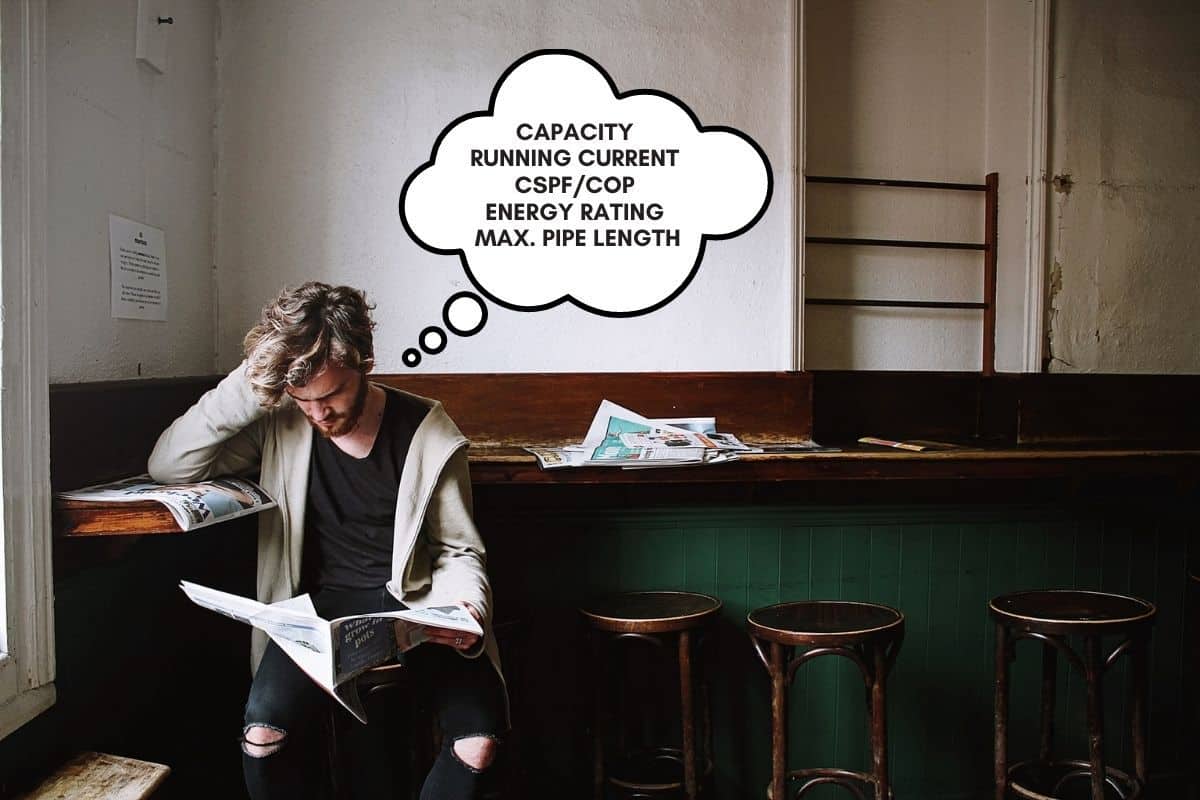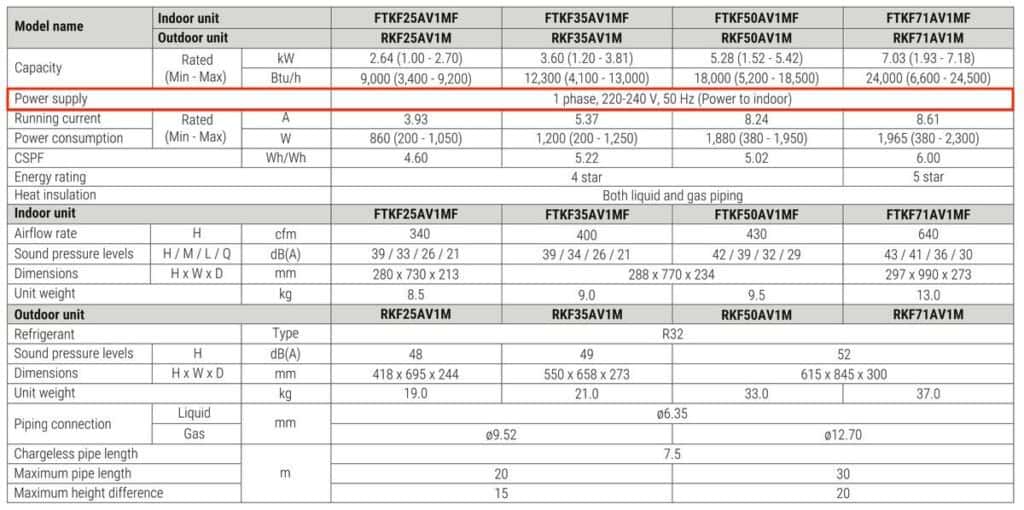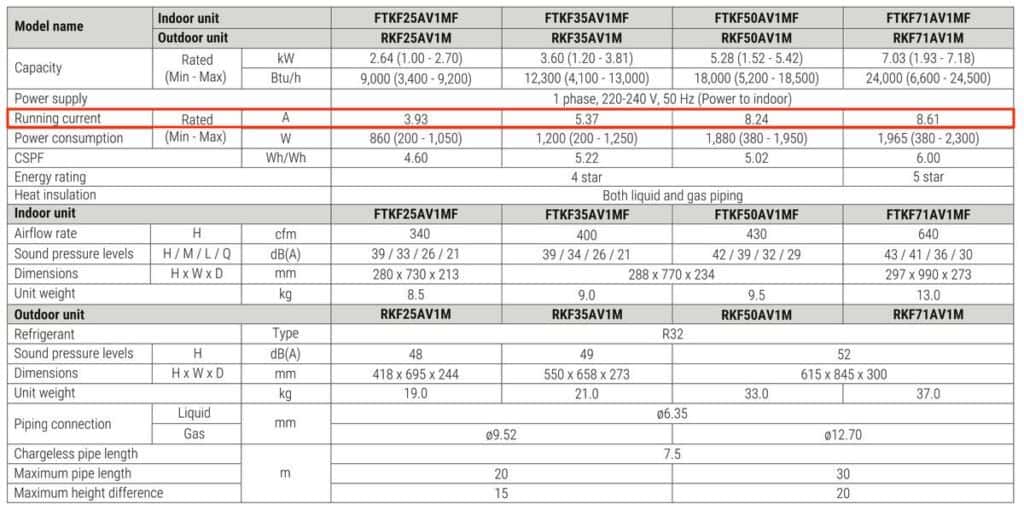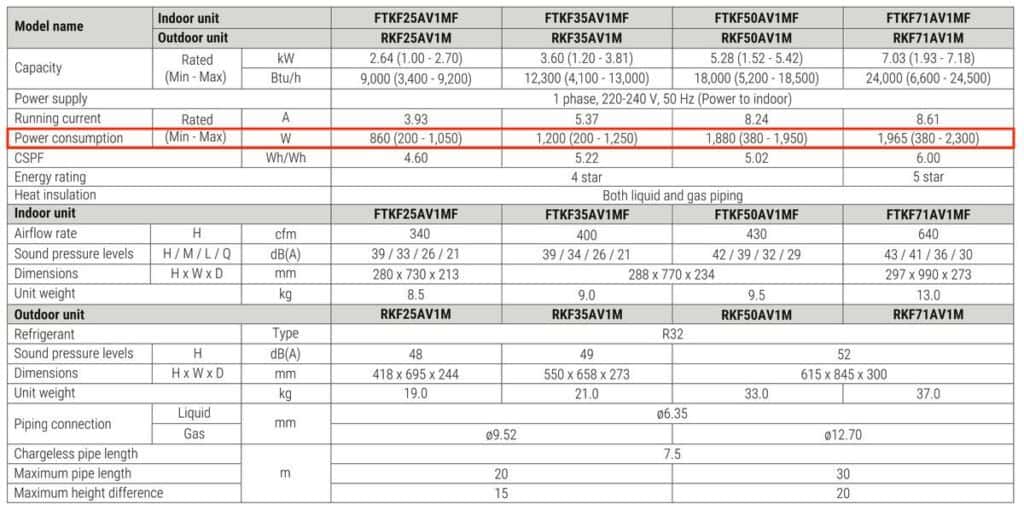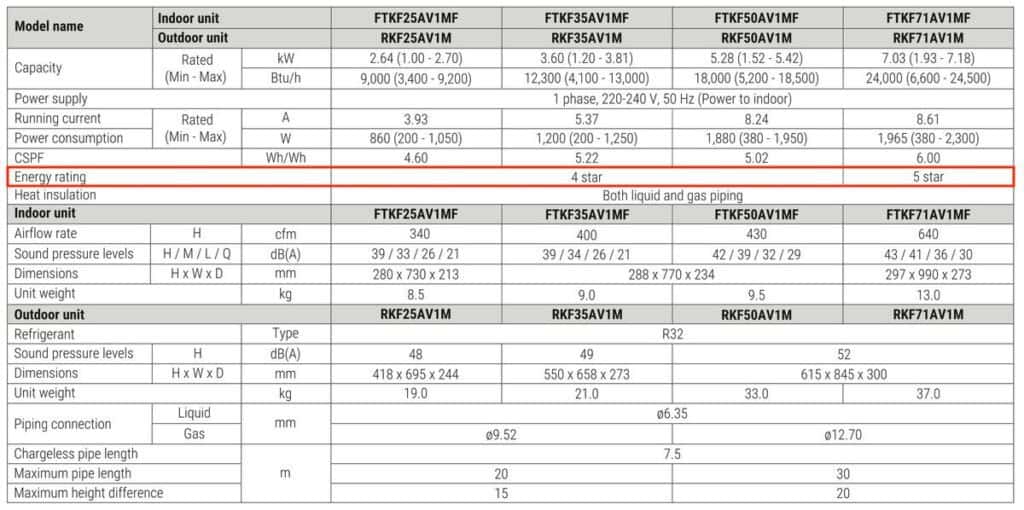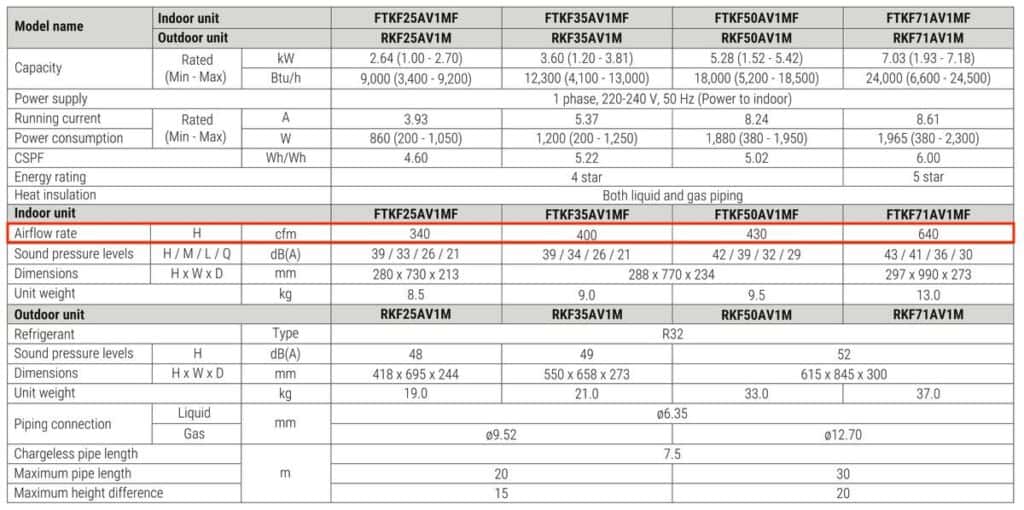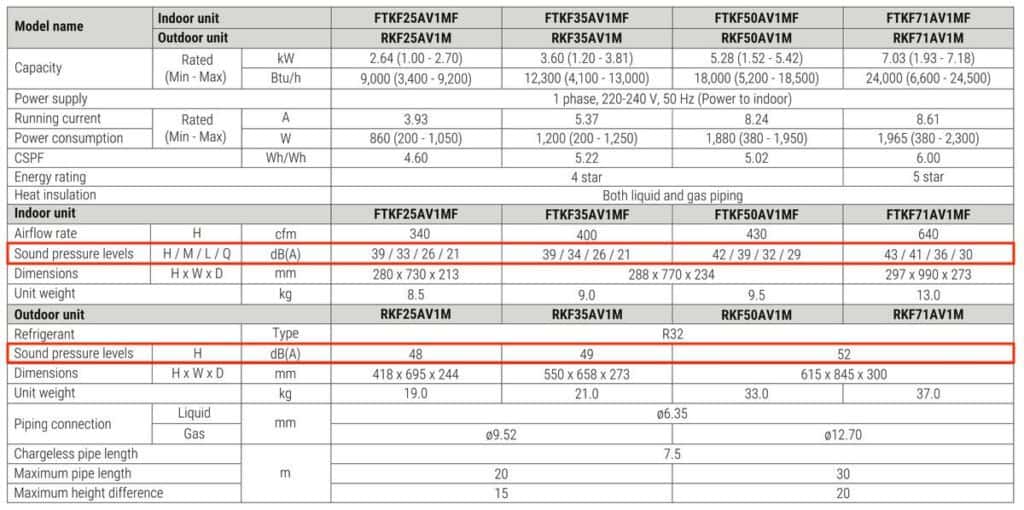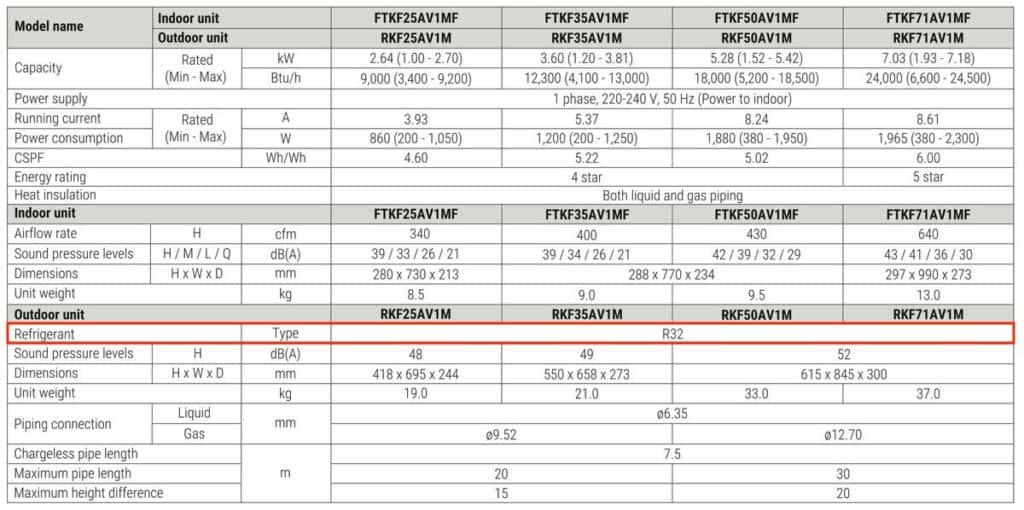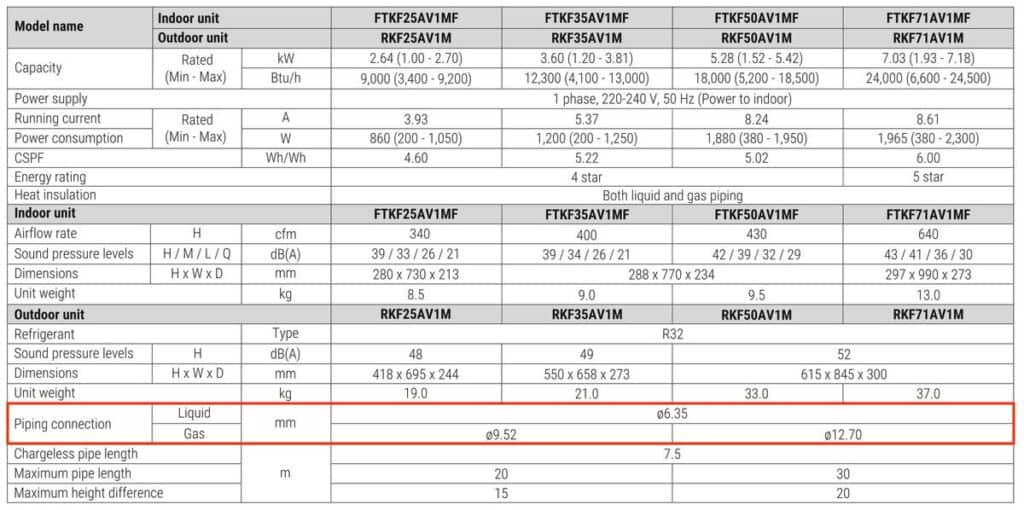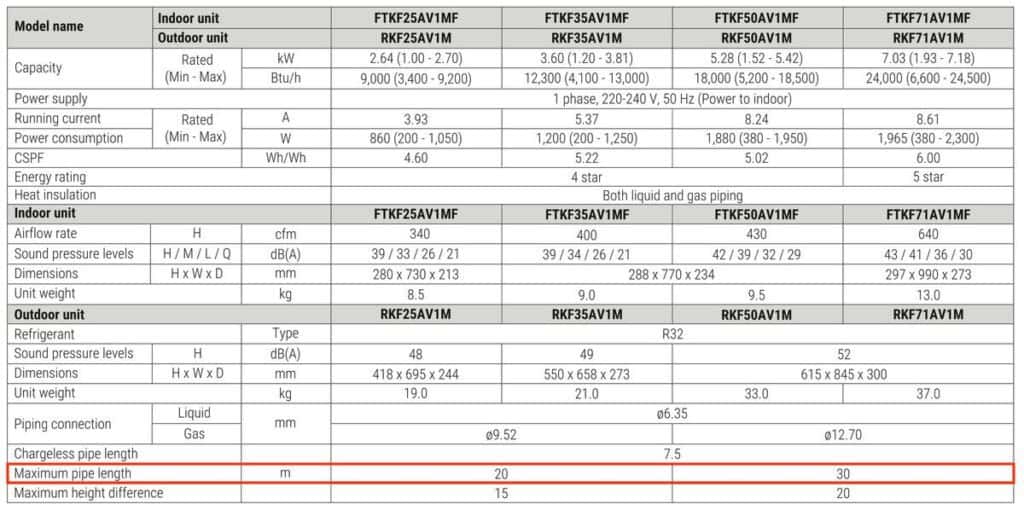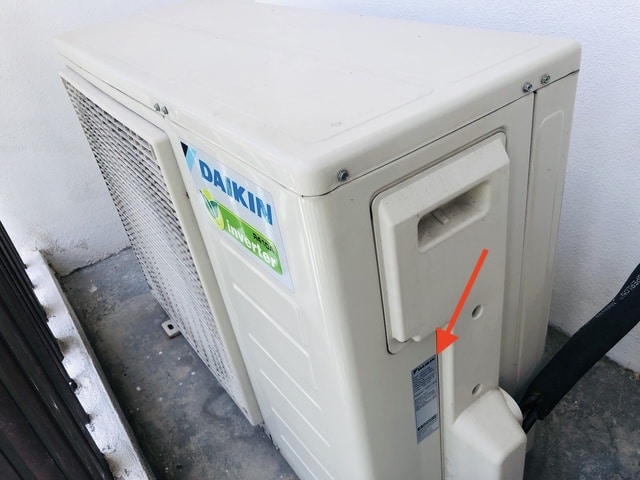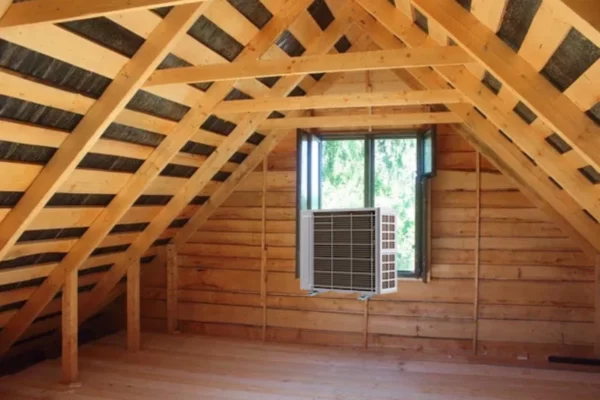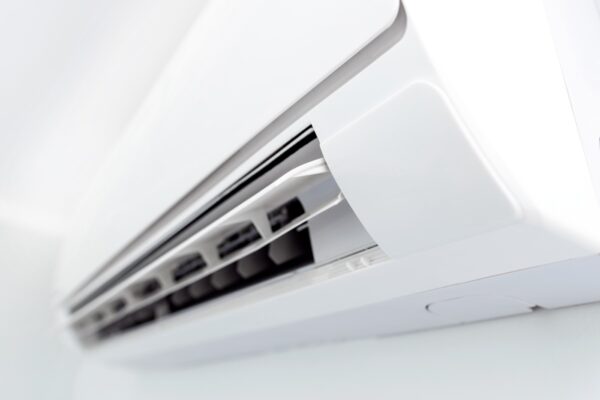How to Read Air Conditioner Specifications (12 Specs!)
Air conditioners have many specifications written on their brochure. It is very important to know what you’re buying. So, how do you read the specifications on your air conditioner?
Most people understand the basic ones such as cooling capacity, power consumption, airflow and etc. These are important but other specifications are equally important and you should at least know what they mean. In the following, I’ll list down each of the specifications and explain to you how to read them.
Mini split is a great heating and cooling system. However, there are many brands and models. So, I did some study to come out the 4 Best Mini Splits in 2023. I encourage you to check it out if you’re considering one now.
12 Specifications of Air Conditioner Explained
Following are the 12 specifications commonly seen in an air conditioner brochure. I’ll explain each of them and I’ll include some tips along the way.
1. Capacity: Cooling Capacity (BTU or btu/hr or Ton or HP or kW)
Capacity or cooling capacity is a measurement of the amount of heat energy that can be removed by an air conditioner within a specified time. Cooling capacity can be expressed in BTU, btu/hr, Ton, HP or kW depending on the region.
Check out: What are BTU, Ton, HP and kW in Air Conditioning?
The greater the cooling capacity, the faster the cooling. However, installing the wrong capacity will spell disaster. So, we need to choose a suitable cooling capacity for our room.
Read about: Choosing Air Conditioners: Guide & Checklist (Download)
The cooling capacity of inverter air conditioners is expressed with a minimum and a maximum because inverter air conditioners can change the speed of their compressor and thus, changing the cooling capacity. See more about inverter air conditioners (is it worth the price).
2. Power Supply: Electrical Requirement (Voltage, Phase & Herz)
Power source or power supply is the electrical characteristic required for the air conditioner to function. The wrong power supply will burn the air conditioner or otherwise, the air conditioner may not able to operate. The power supply is separated into three elements; voltage, phase and frequency or Herz.
- Voltage – Every country has a different voltage. For instance, single phase voltage in Malaysia is 230V while in United States is 120V.
- Phase – It can be single phase or three phases. Small air conditioners usually only required single phase voltage. Single phase or three phase will affect the voltage. For instance, single phase in Malaysia is 230V and three phase is 415V.
- Frequency or Herz – Every country has a different electrical frequency. For instance, the electrical frequency in Malaysia is 50Hz while in Philippines is 60Hz.
3. Running Current: Electrical Current during Operation (Ampere)
Running current is the amount of electrical current running through an air conditioner during operation. Although other components in the air conditioner have current flowing through them, the compressor draws the most current and thus, the running current is often referred as the current of the compressor by many technicians.
The running current of an air conditioner is an important metric to technicians when determining the amount of refrigerant required for the air conditioner. Many technicians will charge the amount of refrigerant based on the running current. They’ll stop filling in refrigerant when the compressor reached the stated running current.
4. Power Consumption: Power Usage (Watt or Kilowatt)
Power consumption is the amount of power used by an air conditioner, expressed in Watt or Kilowatt. Although the unit of measurement for power consumption and cooling capacity is the same (kW), they are not the same thing by any means. So, try not to get confused.
Multiplying power consumption with the working hours gives us kWh which we can then multiply with the rate of electricity to determine the electricity cost.
5. CSPF: Efficiency – Capacity divided by Power Consumption
CSPF stands for cooling seasonal performance factor which is a number that represents the energy efficiency of an air conditioner. The calculation of CSPF is taking the cooling capacity (in kW) and divide it by the power consumption (in kW) under certain conditions. The higher the CSPF, the greater is the energy efficiency of the air conditioner.
You may find some brochures that use COP instead of CSPF. COP stands for coefficient of performance and it is previously used to represents the energy efficiency of an air conditioner. Later, CSPF was developed (better) and COP was replaced.
6. Energy Rating: Efficiency Rated by Authority (1 to 5-star)
Energy rating is the energy efficiency of an air conditioner rated by an authority or a third party certification body. In Malaysia, the energy rating is given by Suruhanjaya Tenaga Energy Commission. Other countries such as United States may use other forms of energy ratings such as Energy Star by U.S. Environmental Protection Agency and U.S. Department of Energy.
The energy rating is different for every country. In Malaysia, the lowest is 1-star while air conditioners with the highest energy efficiency are rated as 5-star. Most inverter air conditioners have 5-star energy rating while most non-inverter air conditioners have 2-star energy rating.
7. Airflow Rate: Air Volume over Time (cfm or cmh or m3/hr)
Airflow rate is the amount of air volume circulated by an air conditioner within a specified duration. The higher the airflow rate, the more you’ll feel the wind but, the noisier the air conditioner. The amount of airflow is usually designed by HVAC engineers using softwares. Too much or too little airflow will cause problems with the air conditioner.
Typically, air conditioners allow you to adjust the airflow by setting the fan speed using a remote controller. If quiet mode is on, the airflow is usually lower than that of the lowest fan speed.
8. Sound Pressure Level: How Noisy It Is (expressed in dBA or NC)
Sound pressure level is the level of noise produced by the air conditioner, expressed in either dBA or NC or both. Sound pressure level usually is indicated for both the indoor and outdoor unit.
To obtain the sound pressure level, a manufacturer placed an air conditioner in an acoustically treated room (anechoic chamber). Then, a sound meter is placed 1 meter away from the air conditioner. An acoustic engineer runs the air conditioner from outside of the room to measure the sound pressure level.
9. Refrigerant: Type of Refrigerant Used
Refrigerant indicates the type of refrigerant used for the air conditioner. Examples of common refrigerants are R410A, R32, R22 and R134a. An air conditioner must be charged with the correct refrigerant in order to function. Charging an air conditioner with the wrong refrigerant can damage the air conditioner and void its warranty. In extreme cases, the copper pipes of the air conditioner can burst due to overpressure.
10. Pipe Connection: Copper Pipe Size for Indoor & Outdoor Unit
Pipe connection indicates the size of the copper pipe suitable to connect the indoor and outdoor unit of a split air conditioner. While you can use a bigger copper pipe but you should never use a smaller copper pipe because the refrigerant will not be sufficient for the air conditioner. The warranty may void if you did not follow the specified pipe size.
Besides, the copper pipe thickness must be suitable for the operating pressure of the air conditioner which is based on the type of refrigerant. Insufficient copper pipe thickness can cause it to burst which can be fatal if a person is close enough to the bursting point.
Curious about: Why Copper Pipes are Used in Air Conditioning?
11. Max. Pipe Lgth: Max. Pipe Lgth between Indoor & Outdoor Unit
Maximum pipe length is the longest possible copper pipe length between the indoor and outdoor unit of an air conditioner. The compressor of an air conditioner has a limit to how far it can push the refrigerant and the maximum pipe length that the compressor oil can return back to the compressor. If you installed the copper pipe longer than the specified length, the air conditioner may not able to operate and the warranty may be voided.
12. Max. Height Diff.: Max. Height Diff. between Indoor & Outdoor Unit
Maximum height difference is the furthest possible vertical distance between the indoor and outdoor unit. The compressor of an air conditioner has a limit to how high it can pump the refrigerant and get its compressor oil back. If you installed the air conditioner too far away (vertically), the air conditioner may not able to operate and the warranty may be voided.
What is Rated Cooling Capacity?
Rated cooling capacity is the resulted cooling capacity of an air conditioner tested in a fixed operating condition. The word “rated” used before a specification means that under a certain condition, the resulted specification is as stated. For instance, Daikin FTKF25AV1MF has a rated cooling capacity of 9,000 btu/hr under the following operating condition (AHRI standard):
- Indoor: 27°C dry bulb, 19°C wet bulb
- Outdoor: 35°C dry bulb
The cooling capacity, running current and power consumption of an air conditioning system is always dependent on the operating condition. They’ll never be a fixed value. Hence, manufacturers have to fix the condition in order to state their value on paper so that people at least know what to expect under what condition.
For instance, if we put the Daikin FTKF25AV1MF with a rated cooling capacity of 9,000 btu/hr at outdoor where the dry bulb temperature is 30°C and we maintain the indoor condition as 27°C dry bulb with 19°C wet bulb, the rated cooling capacity will be lower than 9,000 btu/hr because the outdoor temperature in the actual operation (30°C) is lower than the outdoor temperature (35°C) conditioned by the manufacturer.
If you ask how much lower than 9,000 btu/hr? Well, we’ll need to put the air conditioner in a fixed environment where the indoor condition again is 27°C dry bulb with 19°C wet bulb, but this time the outdoor dry bulb temperature is 30°C. Then, we’ll get the resulted cooling capacity under that condition. Next, we’ll need to get a third party to retest, verify and certify our claimed result. Finally, we are allowed to publish the rated cooling capacity under the condition we just tested.
Where to Find the Specification on Your Air Conditioner?
If you ever need to find and read the specification on your air conditioner, you probably called to a service centre and they asked for the model number or serial number. You usually find a specification sticker on each air conditioner. For a split air conditioner, there are usually two specification stickers; one on the evaporators (indoor unit) and one on the condenser (outdoor unit). They can be found at the side of the units shown as follow:
What is IPX4? IP stands for ingress protection which is an international protection code that defines how well an equipment casing prevents dust and water from entering into it. You can find a list of IP codes here.
If you have anything to add (or ask) about this topic, leave a comment down below!


